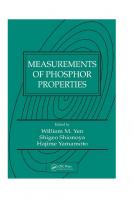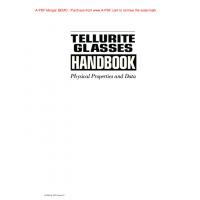
- Author / Uploaded
- Candlish Stewart
Mental Images and Pictorial Properties
Stewart Candlish Mind, New Series, Vol. 84, No. 334. (Apr., 1975), pp. 260-262. Stable URL: http://links.jstor.org/sici
1,375 161 89KB
Pages 4 Page size 595 x 792 pts Year 2007
Recommend Papers
File loading please wait...
Citation preview
Mental Images and Pictorial Properties Stewart Candlish Mind, New Series, Vol. 84, No. 334. (Apr., 1975), pp. 260-262. Stable URL: http://links.jstor.org/sici?sici=0026-4423%28197504%292%3A84%3A334%3C260%3AMIAPP%3E2.0.CO%3B2-8 Mind is currently published by Oxford University Press.
Your use of the JSTOR archive indicates your acceptance of JSTOR's Terms and Conditions of Use, available at http://www.jstor.org/about/terms.html. JSTOR's Terms and Conditions of Use provides, in part, that unless you have obtained prior permission, you may not download an entire issue of a journal or multiple copies of articles, and you may use content in the JSTOR archive only for your personal, non-commercial use. Please contact the publisher regarding any further use of this work. Publisher contact information may be obtained at http://www.jstor.org/journals/oup.html. Each copy of any part of a JSTOR transmission must contain the same copyright notice that appears on the screen or printed page of such transmission.
The JSTOR Archive is a trusted digital repository providing for long-term preservation and access to leading academic journals and scholarly literature from around the world. The Archive is supported by libraries, scholarly societies, publishers, and foundations. It is an initiative of JSTOR, a not-for-profit organization with a mission to help the scholarly community take advantage of advances in technology. For more information regarding JSTOR, please contact [email protected].
http://www.jstor.org Fri Jun 22 07:31:37 2007
Mental Images and Pictorial Properties STEWART CANDLISH
,
Dr. Alastair Hannay has attempted recently to give an account of visualising in terms of the material seeing of mental images which are seen as what they are images of; the imaged objects are then intentionally but not materially seen. His explanatory model is the material seeing of physical pictures: here, similarly, the picture is seen as the pictured objects, and these objects are intentionally but not materially seen. In the face of Ryle's and Ishiguro's reluctance to admit the existence of a materially seen mental counterpart of the physical picture, he relies on the notion of a pictorial property; such properties are seen materially, but it is their function to lead one on to see something that they represent, and they may be instantiated by things having only those properties (i.e. mental images, not physical pictures). In explaining the notion of a pictorial property, Dr. Hannay says on page 163 of Mental Images-A Defence (Allen and Unwin, 1971) :
.. . a pictorial property is a relation between something seen materially and something seen merely intentionally. What relation then? There seems no reason to suppose, as I propose elsewhere, that it is not that of a one-to-one correspondence in respect of visual similarity. This seems at least an intuitively correct basis of an analysis of pictorial representation. Its niceties would have to account, for instance, for the fact that properties in the pictorial relation are not always just the same property ascribed to different objects. Thus although the part of a picture that depicts a crimson cloth must be in part crimson, a picture of something looming need not be a looming picture. 'Elsewhere', in this quotation refers to 'To See A Mental Image', Mind, .82 (April 1973), p. 178, where the same points are made in almost the same words and from which I have taken my initial summary. The major difference between the two passages is that in the article, the inconsistency of the book in saying that a pictorial property is both something seen materially and a relation between something seen materially and something seen merely intentionally, is purged and only the former view is taken. Hannay's account of what it is to be a pictorial property does indeed appear to be 'an intuitively correct basis of an analysis of pictorial representation'. But the appearance stems largely from the fact that employing unexamined the notion of, 'visual similarity' conceals all the important questions, and saving the appearances here is going to involve more than the unfolding of mere 'niceties'. It would be sufficient to establish my points if the Editor could be persuaded to pay for accurate reproductions of some actual paintings. But even in words one can cast doubt on Hannay's claim that 'the part 260
M E N T A L I M A G E S A N D P I C T O R I A L PROPERTI'ES
26 I
of a picture that depicts a crimson cloth must be in part crimson'. I hesitate somewhat to appeal to the case of the expressionist painter who deliberately depicts his objects in the 'wrong' colours. But we may be less uncertain what to say about those pre-nineteenth century painters who employed gradations of tone to increase the sense of depth in a landscape, to the point of depicting in warm brown, vegetation in the foreground, this brown nevertheless being 'read' as green. Further, suppose that I am drawing in pencil a scene involving a crimson cloth; I entitle the sketch, 'Still Life with Crimson Cloth'. Here I have depicted a crimson cloth without using any chromatic colour at all. If I am a particularly skilled artist I may even lead you to 'see' the crimson by, say, carefully arranging the relationships of shading between my apples and my cloth. You may even be led to see it without the helpful hint supplied by my title. It is possible to object to such counter-examples by complaining that in no such case is the real colour of the object literally depicted. Despite the tendency of such a complaint to beg the question, let us allow it for the sake of considering something less disputable. It is perhaps significant that Dr. Hannay's bibliography does not include any of the works of E. H. Gombrich, for a reading of Art and Illusion would surely have made him more cautious in his claims about visual similarity. Gombrich makes clear throughout his book that such notions as producing a likeness, applied to painting, cannot be simply understood in terms of the numerical identity of items of any category. It is not just that 'properties in the pictorial relation are not always just the same property ascribed to different objects', for Gombrich shows that not even the depiction of colours can be understood in this way. In . Chapter IX, section VIII he quotes Ruskin, who observed in the nineteenth century that 'every hue throughout your work is altered by every touch that you add in other places', adds his own remark that 'the same colour will look different when the size of the area changes' and reproduces some simple examples for the reader. What this amounts to in practice is that in order to depict a crimson cloth and make it look crimson (or, even reproduce on a different scale a crimson picture of a crimson cloth), an artist may in certain circumstances have to make that part of his picture scarlet, or purple. Were this not true, painting would be a lot easikr than it actually is. Hannay could try to object here that the part of the picture which is scarlet does nevertheless look crimson and thus his claim will hold for perceived properties; but this will not do. The fact is, that it is scarlet, and seeing it crimson is, in Hannay's own terms, merely intentional seeing and thus irrelevant to the question of the relationship between the thing seen materially and the thing seen intentionally. If even colours will not live up to Hannay's claims concerning pictorial properties (a moment's consideration of shapes reveals even greater difficulties, also discussed by Gombrich), it is not clear what will do so; and for this reason alone his account of what it is to be a pictorial property will not help us to understand mental pictures since it does not even work for (supposedly well understood) physical onces.
262
'
,
S. C A N D L I S H : M E N T A L I M A G E S
However, I fear that the trouble with Hannay's enterprise goes deeper than this technical error, and even those philosophers who hold different views as to the status of mental images (e.g. Ishiguro, Proceedings of the Aristotelian Society, Supplementary Volume, 1967) can get into difficulties through expecting too much from the comparison of visualising with seeing pictures. Thus,not only does Hannay expect the extremely opaque notion of a pictorial property to help in explaining how we can see physical things in our minds, when in fact his account in terms of visual similarity looks even less promising for physical pictures than for mental images; but also we find Ishiguro left with the illusion of having used the notion of seeing as in an elucidatory way when she moves from accounting for seeing a person in a photograph in terms of 'seeing X as Y' to accounting for visualising Y in terms of 'seeing as Y' when the X has, perplexingly, disappeared altogether. I t is still fashionable to begin philosophising about the mind by pointing out a shortcoming of The Concept of Mind, but one thing we should have learned from that book, with all its shortcomings, is to be very circumspect in talk of mental pictures. For pictures, generally, are two-dimensional objects, taking skill to construct and which can be seen as three-dimensional views. But what justification is there for supposing that accounting for the way in which we can see the three-dimensional world in a twodimensional picture is going to have any bearing on mental imagery? If we are looking for comparisons, having a mental image of a person may be phenomenally far more like seeing him than it is like seeing a picture of him (as Hannay admits, with qualifications, on page 173 of 'To See A Mental Image'); but if this is so, why should the notion of seeing as be useful in explaining imagery in terms of pictures? For if we employ it in this context, as it seems we must, either we are faced with Ishiguro's embarrassment of treating visualising as seeing nothing as Y, or by parity of reasoning we should suppose that when I actually see Y I see my perceptions as Y, which is patently absurd. The tendency to treat images as pictures (only mental ones1) and then to go on to argue about whether they exist or not, has trapped even those philosophers who are deliberately trying to excape it.2 Hannay's Defence is directed in part against views which fall into his own error but take an opposite stand on its consequences. I do not know how we are to understand better the nature of visualising; I am not even certain what the problem is supposed to be. But I am clear that to agree that there are mental images is not to be committed to supposing that they are mental pictures, if this is held to mean that explaining how painters depict is necessarily going to tell us how we can see things with our eyes shut. UNIVERSITY OF WESTERN AUSTRALIA I
2
Even H. H. Price who'claimed (in Thinking and Experience) the comparison to be fairly apt, warned against supposing that visual images were somehow two-dimensional. One of the reasons that they take no skill to construct is that they are not two-dimensional objects to be seen as. Such a tendency may be a hang-over from empiricist inclinations to treat seeing and visualising alike as interpreting the essentially two-dimensional in three-dimensional terms.









